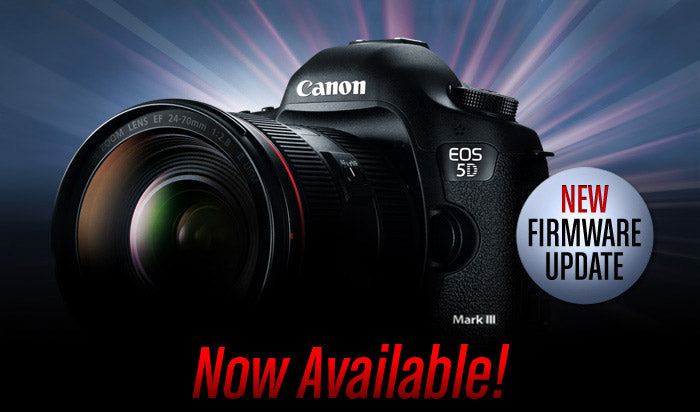The EOS 5D Mark III is a completely re-engineered DSLR camera that boasts improved photo and video capabilities over its predecessor, the EOS 5D Mark II, and continues to address the demanding needs of professionals in still photography, cinema and television. The new firmware update adds two highly useful features: a clean HDMI output option and cross-type AF at f/8.
Clean HDMI Output
To benefit DSLR cinematographers, the EOS 5D Mark III will now be able to record clean, uncompressed digital video with embedded time code over HDMI output while simultaneously displaying the video on the rear LCD display and recording to internal CF or SD cards. Combined with an improved color sampling of YCbCr 4:2:2 8-bit video, this firmware update adds efficiency to video editing, improves color grading options, and enhances on-set monitoring.
The new "mirroring" feature via the HDMI output allows video to be displayed on the rear LCD screen with or without scene and camera information while also outputting a clean video signal to a monitor or external recorder. An external recorder not only enables a video signal devoid of compression artifacts, but also allows a choice of preferred edit-ready codec, the ability to shoot in a variety of frame rates and bit rates, and longer record time. Combined with the heightened color correction capabilities as a result of the expanded color space, post-production workflows will be smoother and offer users greater control and quality. With external recorders it is also possible to use a variety of on-set monitoring solutions, which facilitate real-time viewing of EOS 5D Mark III video with the Rec. ITU-R BT. 709 color matrix. Additionally, it will now be possible to synchronize the start and stop of EOS 5D Mark III video capture with the start and stop of the external recorder.
Cross-type AF Available for Maximum Apertures as Small as f/8
The new firmware allows cross-type autofocusing with the center AF point when the maximum aperture becomes as small as f/8, in the same way that the EOS-1D X does.
If AF point expansion is selected with an f/8 maximum aperture lens/extender combination, the four AF points surrounding the center point will act as AF Assist points. This option effectively expands the size of the AF detection area to enhance autofocus performance with subjects that appear small in the viewfinder and difficult to track, such as small animals and birds in flight. AF points above and below the center will be sensitive to vertical contrast, while points to the left and right will be sensitive to horizontal contrast.

